Hamaren Activity Park
Hamaren Activity Park is a centrally located and easily accessible park in the regional county of Telemark in Norway. It surrounds a kindergarden, schools and a care home for older people. The park promotes physical activity within nature to improve health and well-being. It has become a social gathering point for the entire population.
Project management: Faun Naturforvaltning AS
Commissioner: Municipality of Fyresdal
Background: Hamaran Activity Park is the successful result of joint efforts between the local community, private and public partners.
Lead users:
Sports teams, retirement associations, users from local schools, kindergartens and nursing homes, members of the municipal counicil, youth council, the criminal care and local entrepreneurs and craftsmen
Methods:
Interviews, workshops, obeservation, questionnaire
Awards:
Category winner Landscape Architecture of the Innovation Award for Universal Design 2017 by Design and Architecture Norway on behalf of The Norwegian Ministry of Children, Equality and Social Inclusion.
Grand Award of the IAUD International Design Award 2021, category Public Space Design
Approximately
10,000
visitors a year
in contrast, Fyresdal municipality has
1287
inhabitants
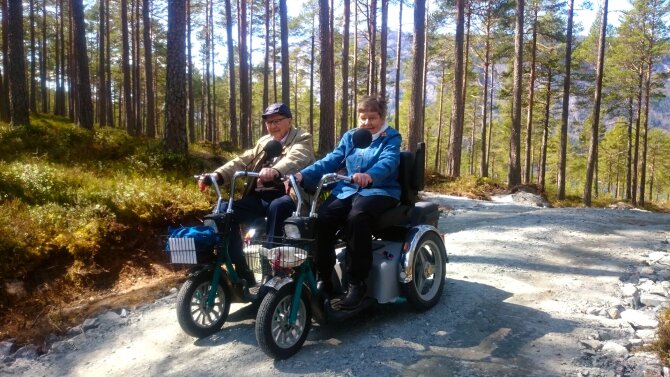
A few members of the Accessibility Committee from Oslofjord West was on a extraordinary nature trip in October which was an experience of the rare. Hamaren Activity Park in Fyresdal was the place, a natural gem of the rare, and closer to nature on wheels you hardly get. This is for us ALL, whether your vision is poor, you roll on wheels, are forgetful or for other mobility reasons.
CHALLENGE
With its large, natural landscapes, the municipality of Fyresdal asked: how can we create an activity park that can be used by everyone and address community needs of residents or visitors of all ages?
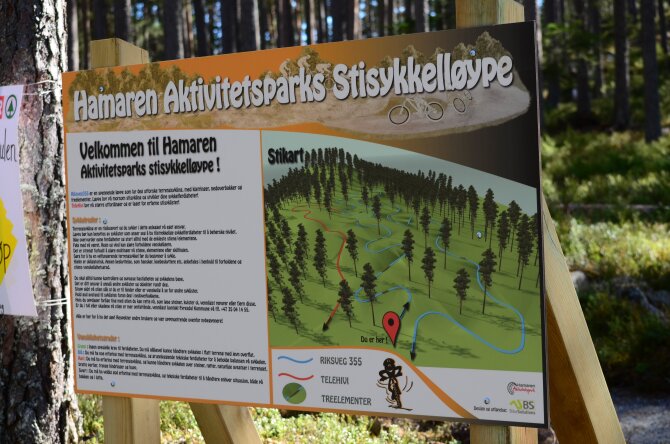
METHODS
The park received funding from government as well as from the private sector, with lottery and betting funds securing basic financing. The project go-ahead was secured by the regional county council, who remained vital to its implementation. The municipality invited the entire population of Hamaren to give input, ideas, needs and perspectives at a meeting at the start of the project.
This resulted in a strong sense of engagement and community ownership from the outset. In turn, the project management team challenged themselves to meet most of the residents’ wishes and even gave the them responsibility for the design of various elements such as information signs, lean-to’s and the BMX park.
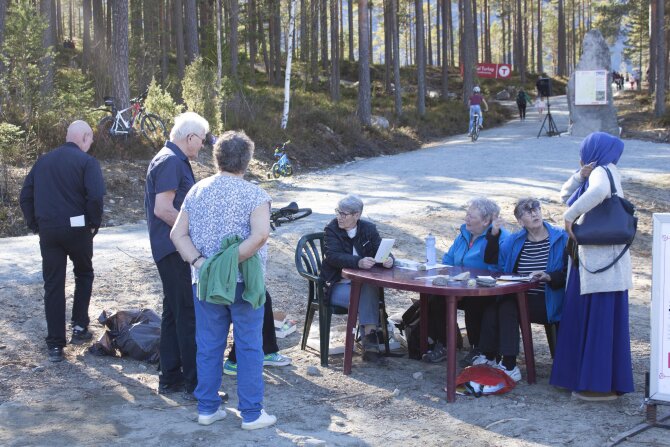
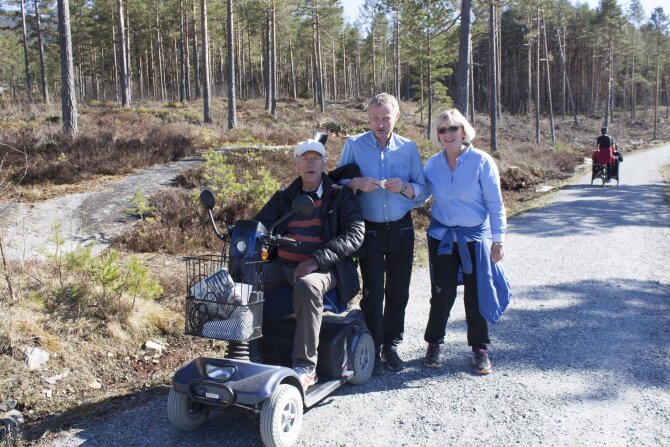
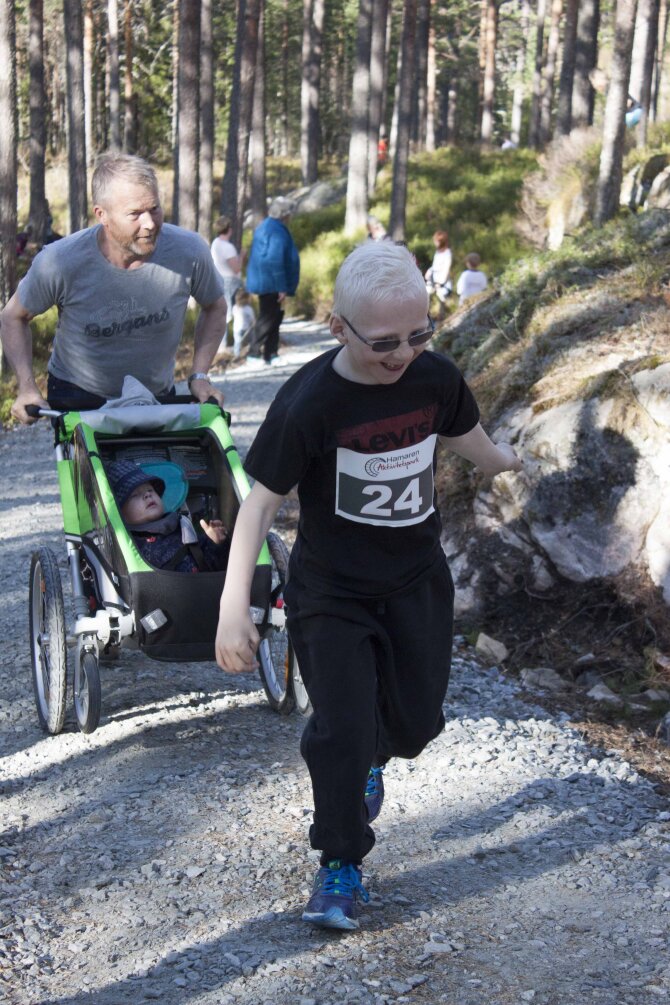

LEAD USERS
In terms of community involvement, the project was exemplary. For example, the contract was open to local craftsmen and companies based in the municipality’s business park, ensuring a local sense of pride and a high-quality outcome. The kindergarden made information signages and younger people felt ownership of specific aspects of the park they were involved in through schemes such as Ungt Entreprenørskap (Young Entrepreneurship).
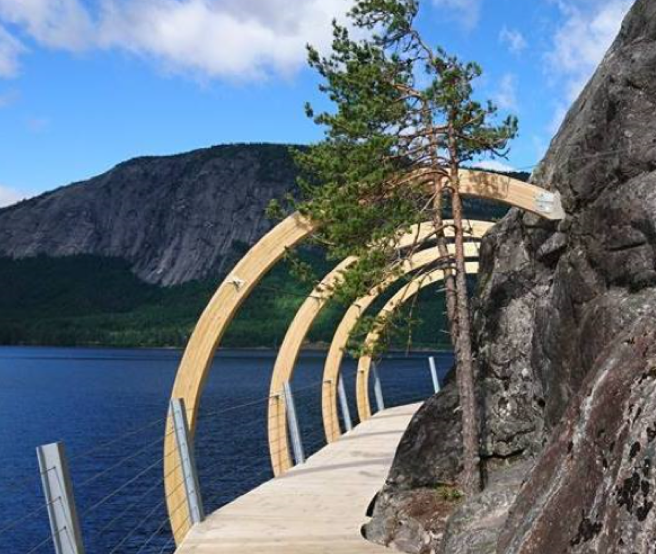
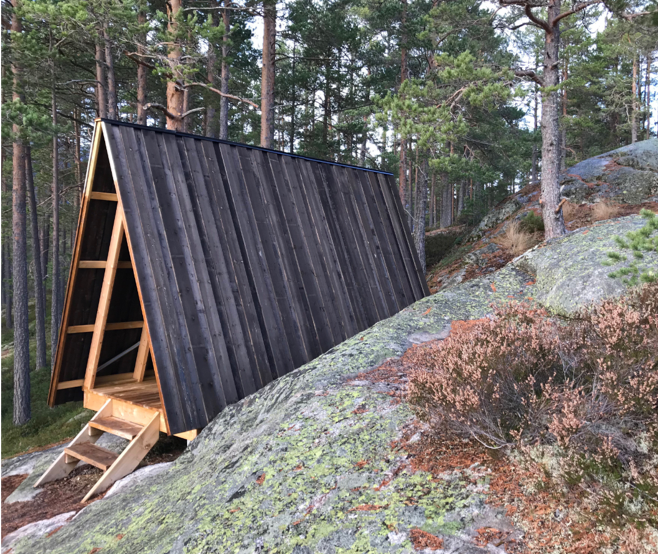
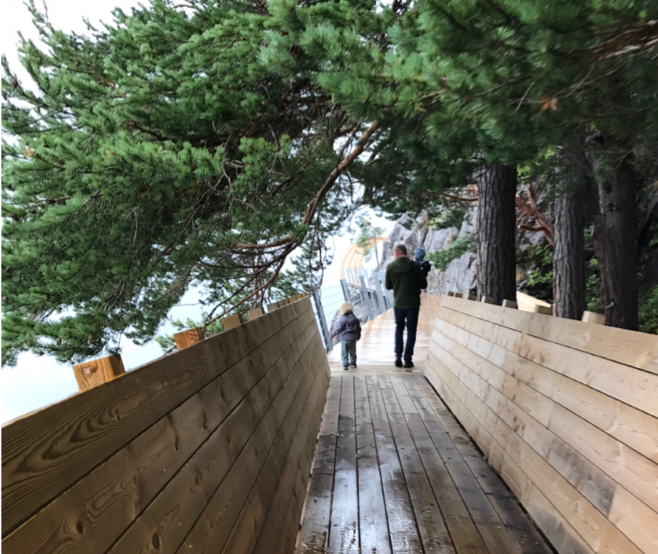
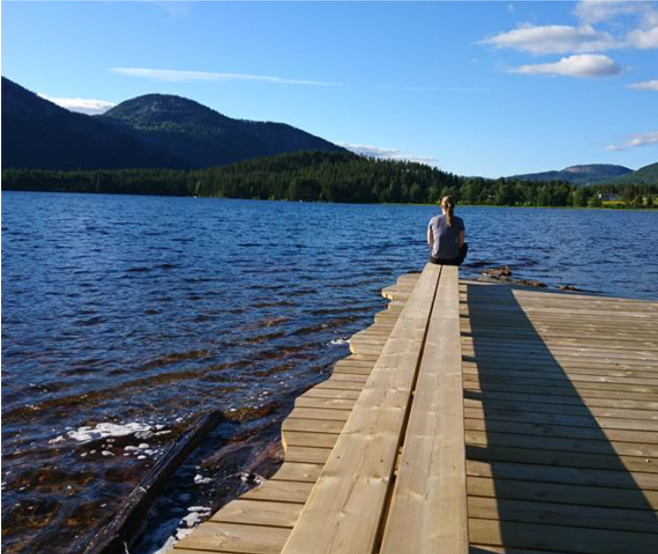
INSIGHTS
The surrounding landscape was stunning, but was not accessible to many people, including the locals, who could not benefit from walks through the high mountains, deep fjords and hilly terrain. This is typical for the inhabitants of many small municipalities. Older people, families with small children, people with different abilities and non locals who were not familiar with wild landscape found it challenging to enjoy and use the natural surroundings and benefit from the health-promoting activities and sensory experiences.
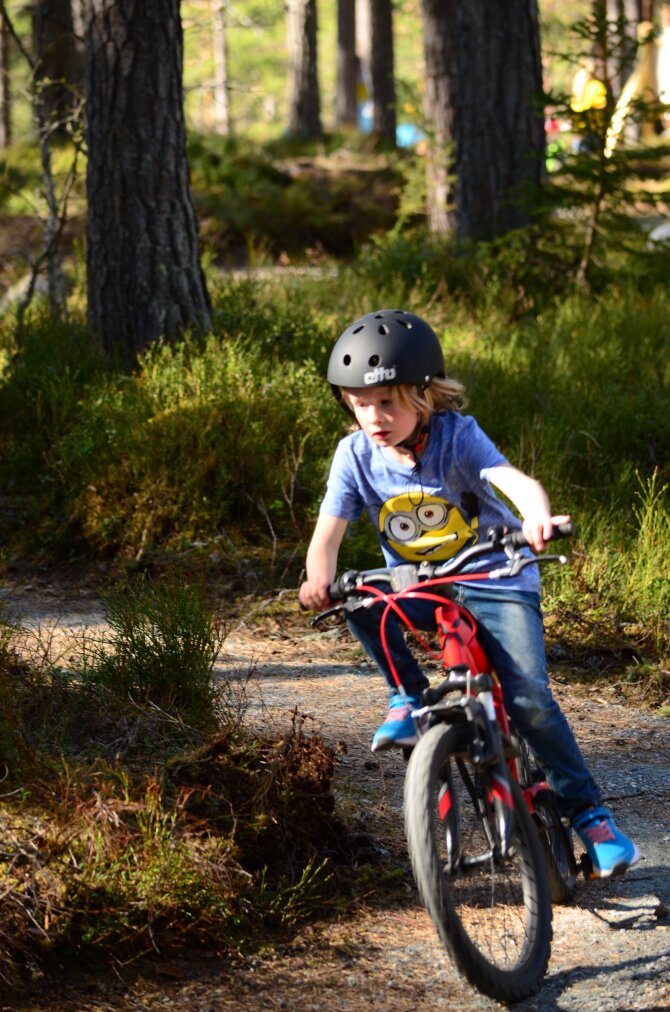
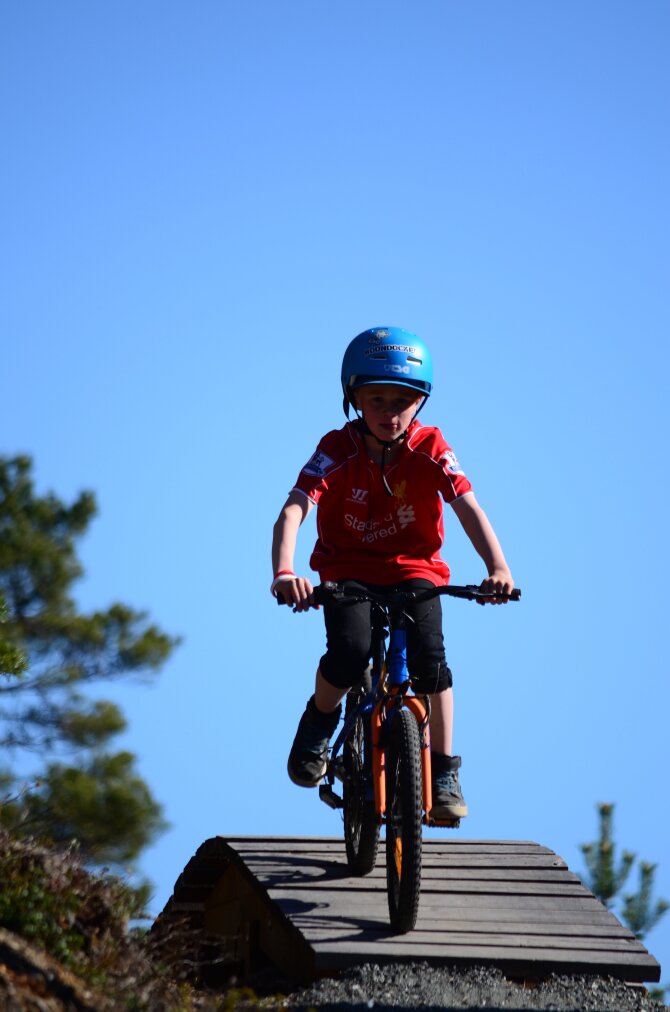

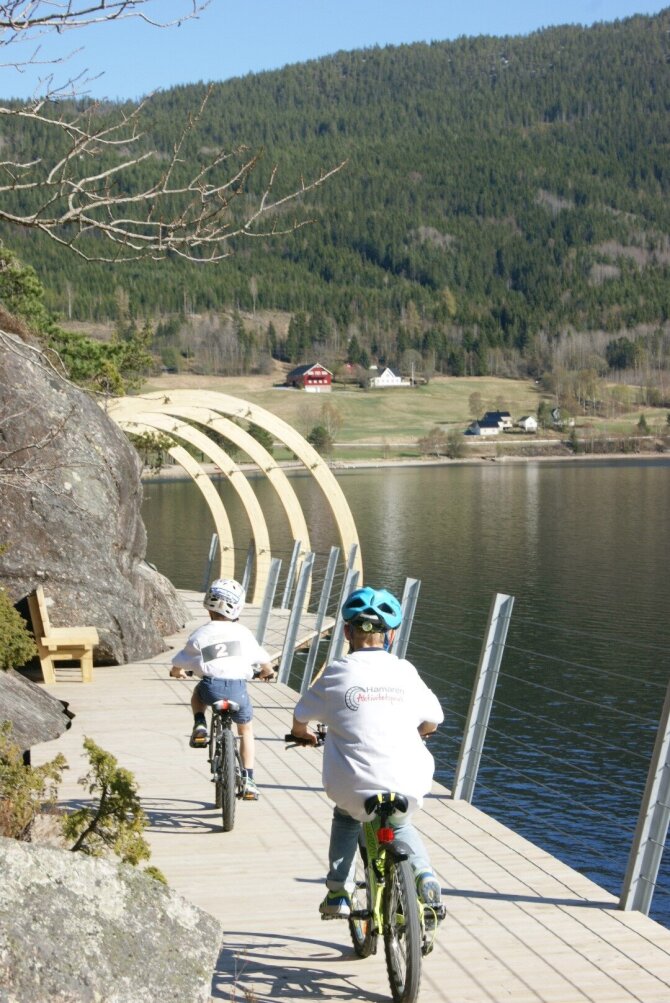
RESULTS
The project encountered significant resistance in its early phases with some believing that the outcome would not justify the investment. However, the criticisms receded as the park became a regional tourist attraction.
Some areas of the picturesque headland were inaccessible, but the gangway and bridge now provide stop-off points to access information and enjoy the vistas. It is inclusive for wheelchairs, and this makes it easier for everyone. As well as creating a positive impact on public health, this park has also raised the level of social cohesion for the locals.
The high degree of community involvement brought a sense of shared ownership, so the space is kept tidy and quiet. Anti-social activities such as loitering, noisy parties and littering have been reduced.
The park has also had a positive “ripple effect” on the small, unique shops in the area, and as the entrance is next to the care home and kindergarden, older people and children access and use it without the need for supervision. The café has become a popular meeting place at the weekends attracting visitors from afar.
Inclusive Design ensures that everyone has equal access, and groups spanning four generations visit the park. This project shows that Inclusive Design is not just about the urban built environment, but can benefit natural spaces as well.
Today the park is used by approximately 10,000 visitors a year, in contrast, Fyresdal municipality has 1287 inhabitants. Now the planning to expand the park to a neighboring island has already begun, see more in the video below.
The activity park also received international recognition by receiving the Grand Award of the IAUD International Design Award 2021. The jury says: Hamaren Activity Park is an excellent example of how to engage the local community and a diversity of user groups and stakeholders in a co-creation process from the start. It emphasises the importance of nature for physical and mental wellbeing, and demonstrates how to make a wild rugged landscape accessible for all. The result is an inclusive park where different needs are met, including those of children, teenagers, older people and people with limited capability, offering a wide range of activities at many levels. The local community’s commitment, ownership and care for the park has also made it an appealing and attractive tourist destination.